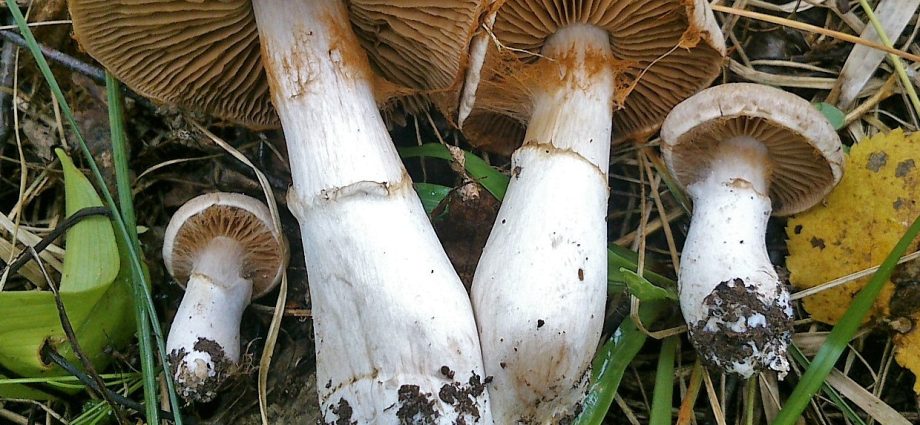Postia ptychogaster (Postia ptychogaster)
- Division: Basidiomycota (Basidiomycetes)
- Subdivision: Agaricomycotina (Agaricomycetes)
- Class: Agaricomycetes (Agaricomycetes)
- Subclass: Incertae sedis (of uncertain position)
- Order: Polyporales (Polypore)
- Family: Fomitopsidaceae (Fomitopsis)
- Genus: Postia (Postiya)
- Type: Postia ptychogaster (Postia ptychogaster)
Synonyms:
- Postia puffy-bellied
- Postia folded
- Oligoporous folded
- Oligoporus puhlobruhii
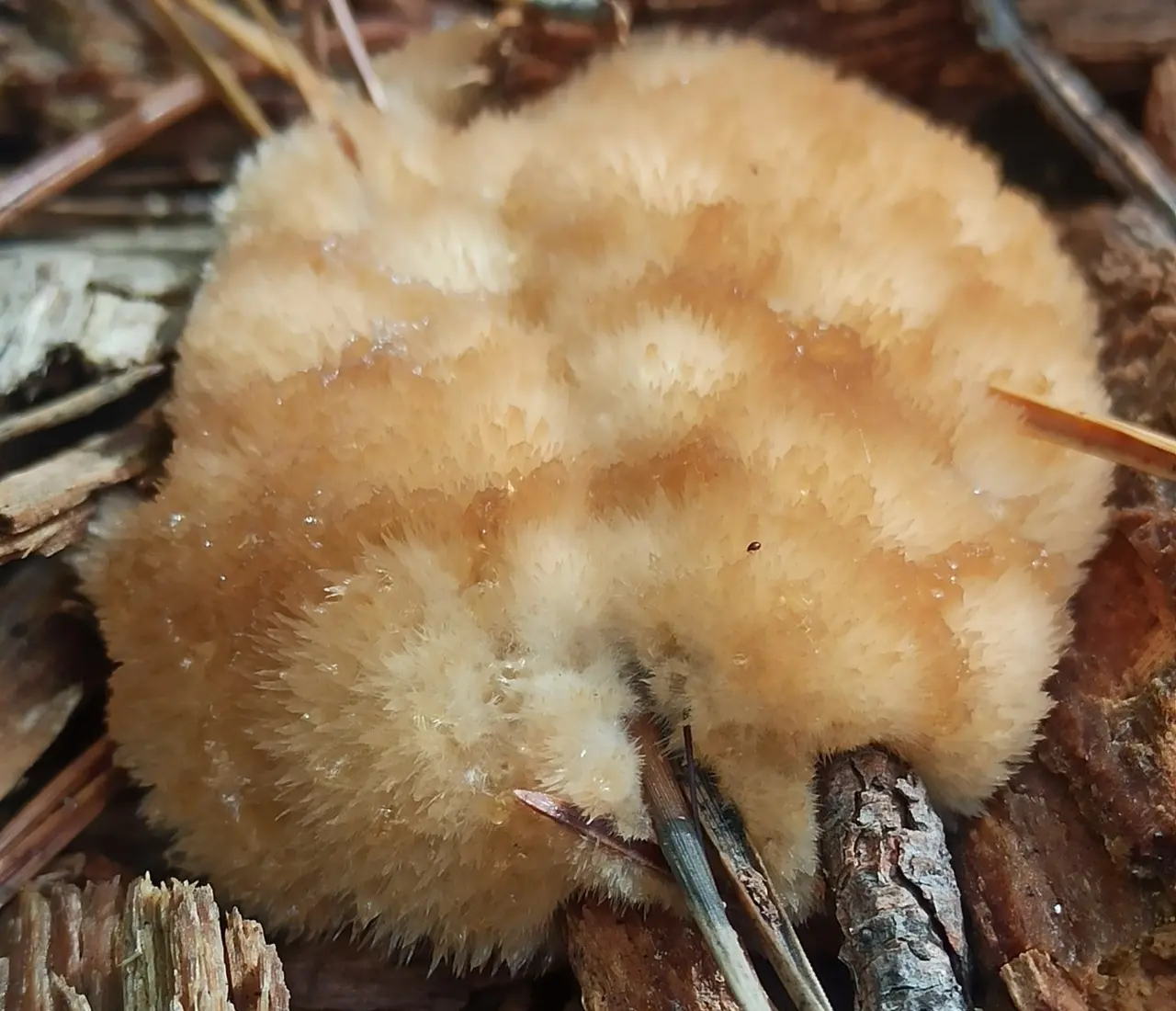
Current name: Postia ptychogaster (F. Ludw.) Vesterh., in Knudsen & Hansen, Nordic Jl Bot. 16(2): 213 (1996)
Postia folded-belly forms two types of fruiting bodies: a real developed fruiting body and the so-called “conidial”, imperfect stage. Fruiting bodies of both types can grow both side by side and simultaneously, and independently of each other.
real fruiting body when young, lateral, soft, whitish. It grows singly or in small groups, nearby bodies can coalesce into bizarre irregular shapes. A single specimen can reach a diameter of up to 10 cm, a height (thickness) of about 2 cm, its shape is pillow-shaped or semicircular. The surface is pubescent, hairy, white in young fruiting bodies, turning brown in old ones.

Fruiting bodies in the conidial stage small, about the size of a fingertip to the size of a quail egg, like small soft balls. First white, then yellowish-brown. When ripe, they become brown, brittle, powdery and disintegrate, releasing mature chlamydospores.
Hymenophore: Tubular, formed in the lower part of the fruiting body, rarely, late and very quickly decays, which makes identification difficult. The tubules are brittle and short, 2-5 mm, sparse, at first small, approximately 2-4 per mm, regular “honeycomb” shape, later, with growth, up to 1 mm in diameter, often with broken walls. The hymenophore is located, as a rule, on the underside of the fruiting body, sometimes on the sides. The color of the hymenophore is white, creamy, with age – cream.
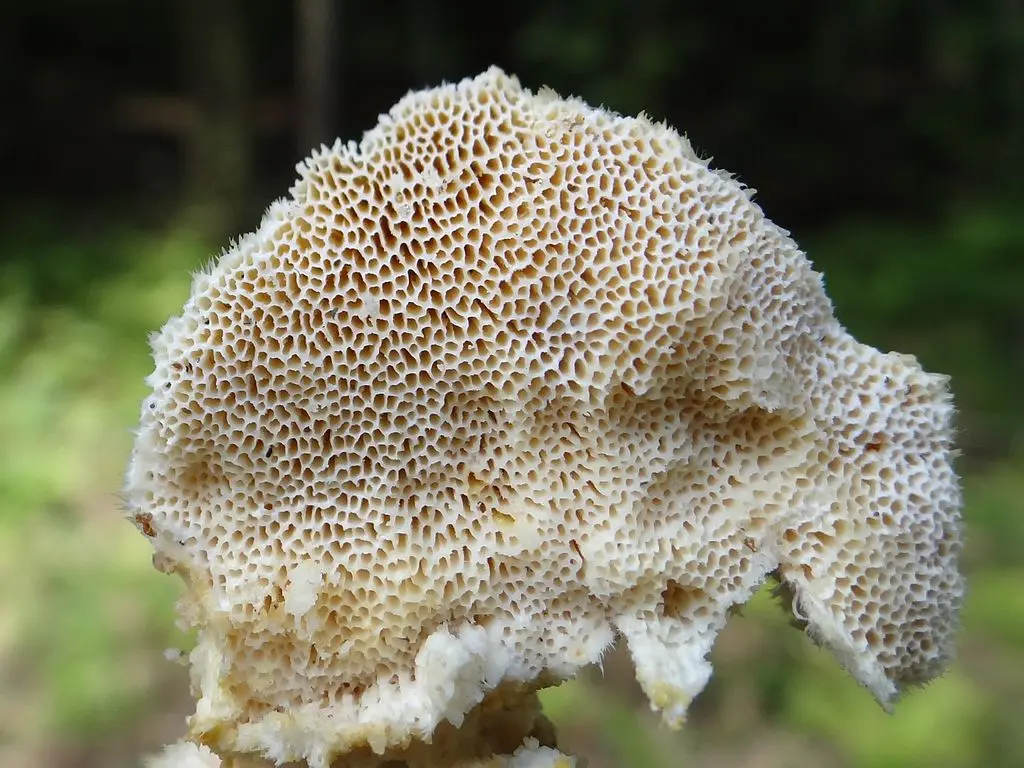
(Photo: Wikipedia)
Pulp: soft in young fruiting bodies, more dense and firm at the base. Consists of radially arranged filaments separated by voids filled with chlamydospores. In section, a concentric zonal structure can be seen. In adult mushrooms, the flesh is fragile, crusty.
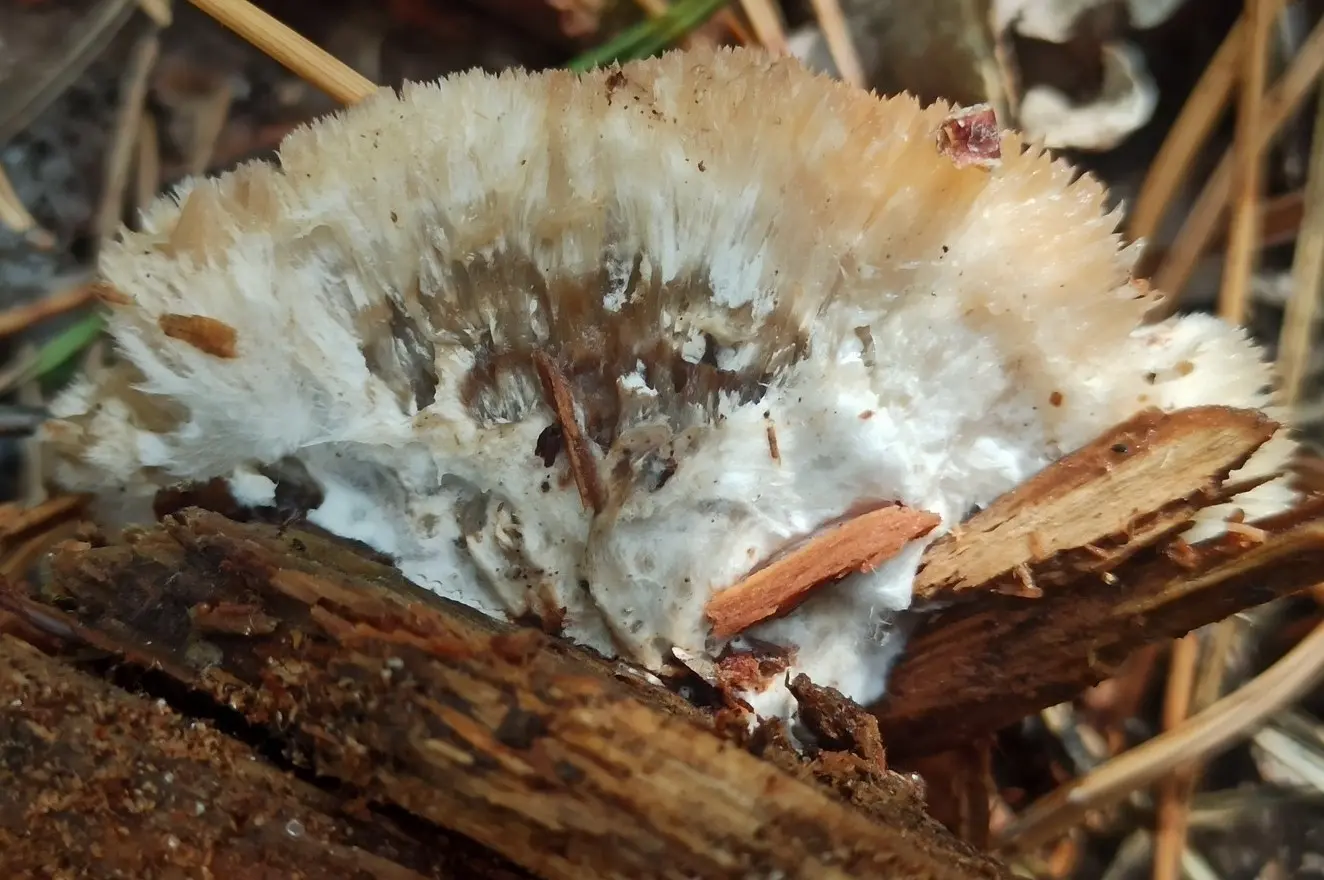
Chlamydospores (which form at the imperfect stage) are oval-elliptical, thick-walled, 4,7 × 3,4–4,5 µm.
Basidiospores (from real fruiting bodies) are elliptical, with a beveled nose at the end, smooth, colorless, usually with a drop. Size 4–5,5 × 2,5–3,5 µm.
Inedible.
Postia folded-bellied – late autumn species.
Grows on deadwood, as well as a root parasite on dying and weakened wood of living trees in coniferous and mixed forests, mainly on conifers, especially on pine and spruce, also noted on larch. It also occurs on deciduous trees, but rarely.
Causes brown rot of wood.
In addition to natural forests and plantings, it can grow outside the forest on treated wood: in basements, attics, on fences and poles.
Fruiting bodies are annuals, under favorable conditions in the place they like, they grow annually.
Postia ptychogaster is considered rare. Listed in the Red Books of many countries. In Poland, it has an R status – potentially endangered due to a limited range. And in Finland, on the contrary, the species is not rare, it even has a popular name “Powdered Curling Ball”.
It is found throughout Europe and Our Country, Canada and North America.
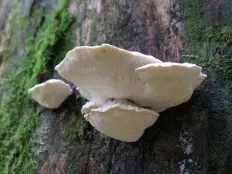
Postia astringent (Postia stiptica)
This postia does not have such a pubescent surface of the fruiting bodies, in addition, it has a clear bitter taste (if you dare to try)
Similar imperfectly shaped pubescent fruiting bodies occur in other species in the genera Postia and Tyromyces, but they are less common and usually smaller in size.
- Arongylium fuliginoides (Pers.) Link, Mag. Gesell. natural Friends, Berlin 3(1-2): 24 (1809)
- Ceriomyces albus (Corda) Sacc., Syll. fungus (Abellini) 6: 388 (1888)
- Ceriomyces albus var. richonii Sacc., Syll. fungus (Abellini) 6: 388 (1888)
- Ceriomyces richonii Sacc., Syll. fung. (Abellini) 6: 388 (1888)
- Leptoporus ptychogaster (F. Ludw.) Pilát, in Kavina & Pilát, Atlas Champ. l’Europe, III, Polyporaceae (Prague) 1: 206 (1938)
- Oligoporus ptychogaster (F. Ludw.) Falck & O. Falck, in Ludwig, dry rot research. 12:41 (1937)
- Oligoporus ustilaginoides Bref., Unters. total fee Mycol. (Liepzig) 8:134 (1889)
- Polyporus ptychogaster F. Ludw., Z. collected. nature 3: 424 (1880)
- Polyporus ustilaginoides (Bref.) Sacc. & Traverso, Syll. fung. (Abellini) 20: 497 (1911)
- Ptychogaster albus Corda, Icon. fung. (Prague) 2: 24, fig. 90 (1838)
- Ptychogaster flavescens Falck & O. Falck, Hausschwamm-forsch. 12 (1937)
- Ptychogaster fuliginoides (Pers.) Donk, Proc. K. Ned. Akad. Wet., Ser. C, Biol. Med. Sci. 75(3): 170 (1972)
- Strongylium fuliginoides (Pers.) Ditmar, Neues J. Bot. 3(3, 4): 55 (1809)
- Trichoderma fuliginoides Pers., Syn. meth. fung. (Göttingen) 1: 231 (1801)
- Tyromyces ptychogaster (F. Ludw.) Donk, Meded. Bone. Sparrow. Herb. Rijks Univ. Utrecht 9:153 (1933)
Photo: Mushik.










